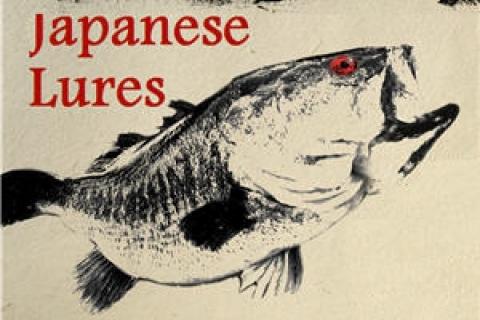
BASSIN' IS BIG IN THE LAND OF THE RISING SUN
by JD Pate
Head across the Pacific to explore the subculture of bass fishing that's grown up around ancient Lake Biwa, where the explosion of a largemouth bass population has Japanese anglers going hawg wild.
 |
| Bass fishing has exploded in Japan & so has Japanese lure technology. |
Four million years old. 260 square miles. 340 feet deep. Lake Biwa is central to the history and culture of Japan, located near the ancient capital of Kyoto. Trout, carp, ayu, catfish, and many others are native to the lake—these fish have fed the Japanese for millennia.
But there are two new residents of these ancient waters—imports from America. Bluegill were first discovered in the lake in 1965, and largemouth bass in 1974, and their populations have since exploded. So has the cult of bass fishing in Japan.
Then, in 2009, a shock-wave rocked the bass fishing world when Manabu Kurita pulled a 22 lb. 5 oz. mammoth bucketmouth from Lake Biwa. This tied George Perry's 1932 world record Georgia largemouth, and Kurita has since become a rock star in Japanese bass-fishing circles.
Manabu Kurita weighs the largemouth bass that tied with George Prerry's previous world record.
There's nothing "traditional" about bass fishing in Japan. The subculture bases its gear and techniques on American precedent, modifying them for their own heavily pressured largemouth. And in true Japanese form, the lures that have appeared to fill these needs are both detailed, functional, highly effective on bass around the world.
Companies like Megabass, Jackall, Yo-Zuri, and Lucky Craft have successfully marketed their lures in the US, and you'll find them in almost every pro's tackle box. Hallmarks of these lures include precision engineering, truly unique design, and incredible fish-catching ability. The sometimes bizarre-looking design of some Japanese lures arise from the incredibly high fishing pressure on largemouth in the island nation—which is the size of California, with four-times the population. And since most anglers fish from shore, in waders, or in float tubes, there are high concentrations of fishermen on or near the shore. Thus the bass of Japan have seen everything there is to offer, so lure designers have responded by producing baits neither bass nor man have seen before.
Arguably, the most influential person in the Japanese bass fishing scene is an American of Japanese descent, Gary Yamamoto. Born in Hawaii, Gary served in the US Air Force during the Vietnam War, and later moved with his family to Page, a town on the shore of Lake Powell in Arizona. He began winning bass tournaments and designing lures—including the legendary Senko—and by the early 1980s became successful enough to put his bass boat on a plane and fly it to the land of his ancestors. Japanese anglers had never seen anything like it—and he almost single-handedly introduced bass madness to the country. One young man that spoke with Mr. Yamamoto during his tour of Japan was Takahiro Omori, who went on to dedicate his life to professional bass fishing in America, and won the 2005 Bassmaster Classic.
All of these advances by innovative Japanese lure designers and anglers put North American bass fishermen in a favorable position. These lures are highly realistic, incredibly durable, and give you an advantage over other lures—our bass haven't seen anything like them, and they can't get enough of them. So do yourself a favor, and pick up a couple for your tackle box. You're sure to be pleased with the results you get on the water.
|
Shop Jackall Baits |
Shop Lucky Craft |
Shop Megabass |
Shop Yo-Zuri |
Shop Gary Yamamoto |
- 10771 views






